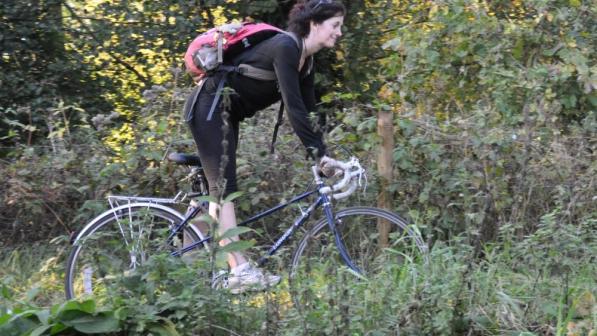Why Trails for Wales?

As of this morning, Cycling UK's and OpenMTB's Trails for Wales campaign had attracted 1600 declarations of support in just over a week, calling for greater access to Wales’ Rights of Way network. Sources within the Welsh Government have said this has been the greatest engagement they have ever had with the off road cycling community, and as more supporters and organisations join our campaign, it is clear our message is welcomed and on track.
However, for a very small minority (less than 0.25% of over-all supporters so far), there has been some confusion about Trails for Wales and what it is trying to achieve. Their concern is valid and being the same in nature, is undoubtedly shared by others, which is why I would like to address it here.
Trails for Wales is looking to open up the Welsh Rights of Way access beyond the mere 21% it enjoys at the moment and adopt a similar policy as Scotland has enjoyed since 2003. It is not, as might be mistakenly believed, advocating an opening of all footpaths to cycling. That would be irresponsible.
Generally footpaths’ status have been decided back in the annals of history prior to the invention of the bicycle."
Cycling UK, however, does believe that it is acceptable for cyclists to use footpaths, provided they do so in a manner which respects the safety of other path users and their peaceful enjoyment of the outdoors - and with due regard for the environment and its ecology. This is very much what Trails for Wales is about, namely responsible access.
Generally footpaths’ status have been decided back in the annals of history prior to the invention of the bicycle. History of use dictates status, rather than functionality, and it is this archaic practice which we want to see brought up to date.
We’ve a clear long standing policy for where Cycling UK believes it is acceptable for cyclists to ride on footpaths:
- Where the surface and width of the path make it eminently suitable for safe cycling without causing disturbance or risk to pedestrians; or
- Where the path is lightly used, such that the likelihood of disturbance or risk to pedestrians is minimal; or
- Where a path is unlikely to attract such high levels of cycling that it will cause environmental damage (notably erosion); or
- Where there is a reasonable belief that the footpath in question might already carry higher rights, for example: where there is historic evidence (e.g. through enclosure award maps) demonstrating past use either by horses or by vehicles; where the path is shown on OS maps as an ‘Other Road with Public Access’ (ORPA), indicating an assumption that higher rights may exist; where there is regular use by equestrians, motor vehicles and/or by other cyclists
Another concern is that off-road cyclists will tear down country tracks and spoil the tranquillity of a countryside walk, and that it is not enough to rely on such cyclists to behave responsibly.
By opening up the rights of way network, it is more likely that we will see a wider dispersal of cyclists rather concentrated floods in one place. Using Scotland as an example (and inspiration for the campaign itself), these concerns would appear to be unfounded.
As to behaviour, there will always unfortunately be a small minority of people who will abuse any system. As a society we rely upon people to behave responsibly in their day to day life whether it is at home, the office, on the road etc, and surely is it not so far-fetched to expect off-road cyclists to behave likewise? To tar off road cyclists as some how having different attributes to anyone else, is almost falling into the same trap as those who say “all cyclists are red light jumpers”.
Cycling UK will never endorse nor support irresponsible cycling – no matter the location. However, we should not let the fear of the few prevent us from a wider goal of opening up much more of the Rights of Way (RoW) network in England and Wales. This would be of enormous benefit for the healthy and environmentally-friendly activity of cycling, both for recreation and day-to-day travel.
Whether a legal right exists to cycle on a RoW does not necessarily relate to how suitable it is. Many footpaths are better for cycling than many bridleways– but, in law, cyclists are only permitted to use the latter. From a cyclist’s point of view, therefore, this often makes the RoW network incoherent, illogical and frustrating. Through Trails for Wales we have the opportunity to change this situation, in the short term for Wales but hopefully looking to the future also for England.
Show your support for responsible access in Wales and England and join the Trails for Wales movement!

